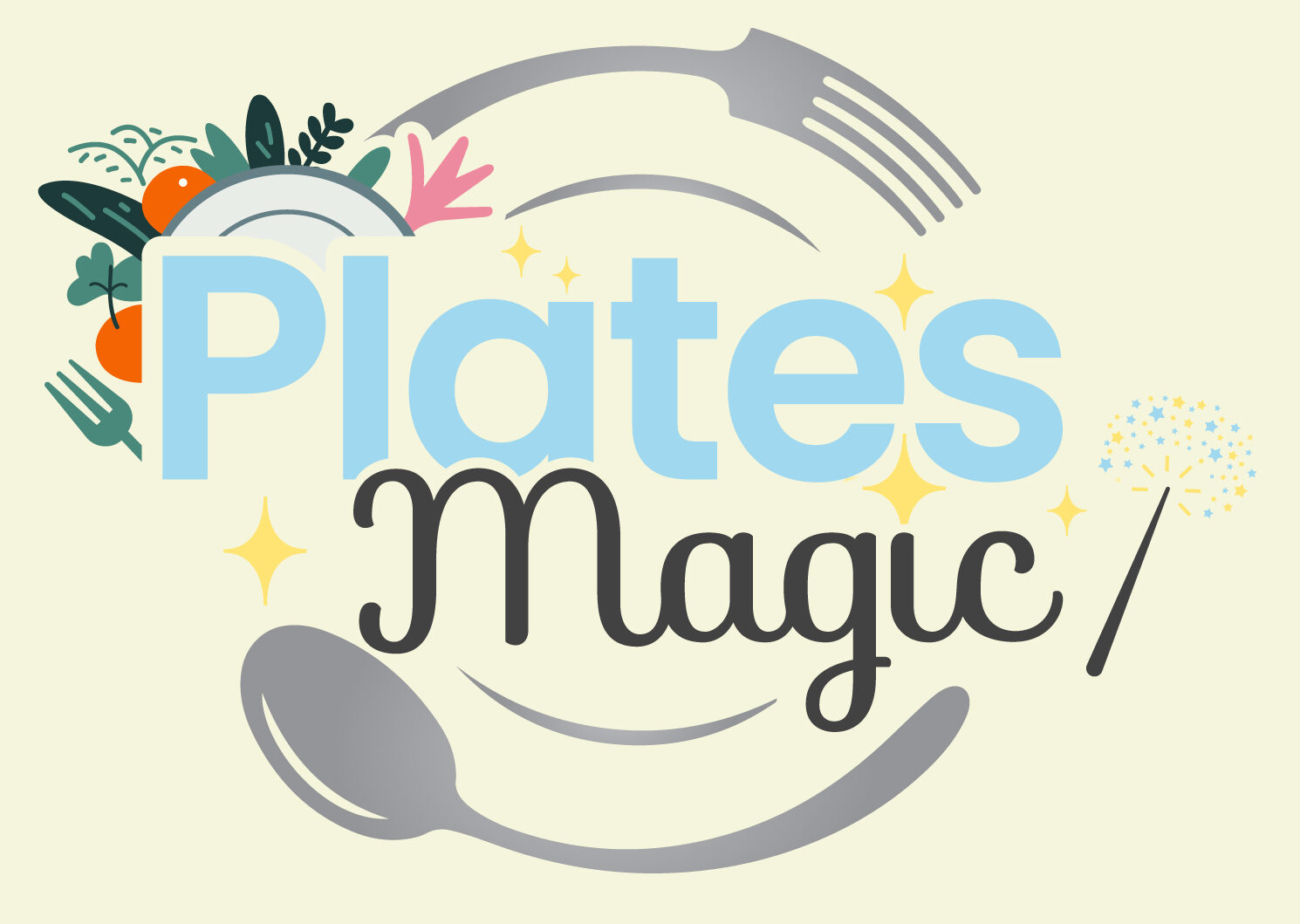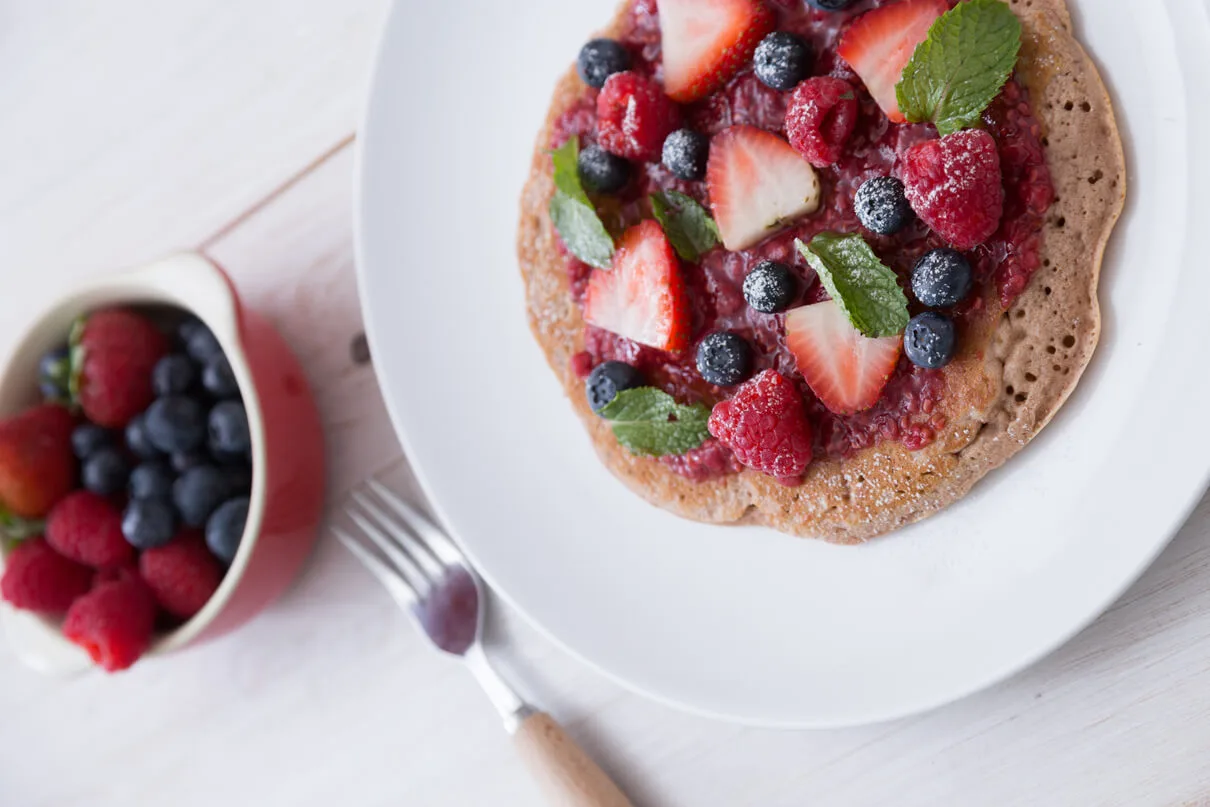Introduction
Pancakes are a cherished breakfast staple across the globe. Whether enjoyed with a drizzle of syrup, fresh fruit, or whipped cream, they are synonymous with comfort and indulgence. However, traditional pancake recipes often prioritize flavor over nutrition, raising concerns for those pursuing a healthier lifestyle. This brings us to an important question: What is the healthiest way to eat pancakes? Understanding what is the healthiest way to eat pancakes ensures you can enjoy them guilt-free while boosting your nutrition.
The good news is that pancakes don’t have to be a guilty pleasure. By using nutrient-dense ingredients like oats, bananas, and plant-based milk, you can transform this classic dish into a wholesome meal. Opting for natural sweeteners and avoiding calorie-heavy toppings further enhances their nutritional profile. Variations like Healthy pancakes with oats and Healthy banana pancakes provide fiber, vitamins, and sustained energy, making them excellent choices for breakfast or brunch.
In this article, we’ll explore how to create delicious yet healthy pancakes with simple ingredient swaps and easy recipes. We’ll also answer common questions, such as “What can I put on pancakes instead of syrup?” and provide practical tips for making fluffy, low-calorie pancakes. Whether you’re looking to maintain your health or try new recipes, this guide has you covered.
1. The Problem with Traditional Pancakes
Traditional pancakes are undeniably delicious but often fall short when it comes to nutritional value. The core ingredients—refined flour, sugar, and butter—are major culprits. While these create fluffy, flavorful pancakes, they also contribute to a high-calorie, low-nutrient profile that may not align with health goals.
Why Traditional Ingredients Are Problematic
- Refined Flour: Stripped of its fiber and nutrients, white flour leads to quick energy spikes and subsequent crashes.
- Sugar: While it adds sweetness, sugar increases calorie counts without providing essential vitamins or minerals. Excessive sugar intake can also disrupt blood sugar balance.
- Butter: Rich in saturated fats, butter adds unnecessary calories and may contribute to long-term health concerns if overused.
Combined, these ingredients create pancakes that provide short-lived energy and lack the essential nutrients needed for a balanced breakfast.
The Case for Healthier Ingredient Swaps
Fortunately, simple ingredient swaps can transform traditional pancakes into a more nourishing dish:
- Replace white flour with oats, almond flour, or whole wheat flour for added fiber and nutrients.
- Swap sugar for natural sweeteners like honey, mashed bananas, or maple syrup in moderation.
- Use healthier fats such as coconut oil or Greek yogurt to reduce saturated fat content.
With these adjustments, you can create pancakes that are not only healthier but also just as satisfying. Recipes for low-calorie pancake options and healthy fluffy pancakes show how easy it is to make these changes while still enjoying your breakfast favorites.
2. Ingredients for the Healthiest Way to Eat Pancakes
Transforming pancakes into a nutrient-rich meal starts with choosing the right ingredients. By swapping traditional components for healthier alternatives, you can create pancakes that are high in fiber, packed with protein, and low in empty calories. Let’s explore three popular options: Healthy pancakes with oats, Healthy banana pancakes, and low-calorie pancake recipes.
2.1. How to Make Healthy Pancakes with Oats: A Simple Recipe
Oats are a powerhouse ingredient for making healthy pancakes. They are rich in fiber, which supports digestion, and contain slow-digesting carbohydrates that provide long-lasting energy. Additionally, oats offer a moderate amount of protein, making them ideal for a filling breakfast.
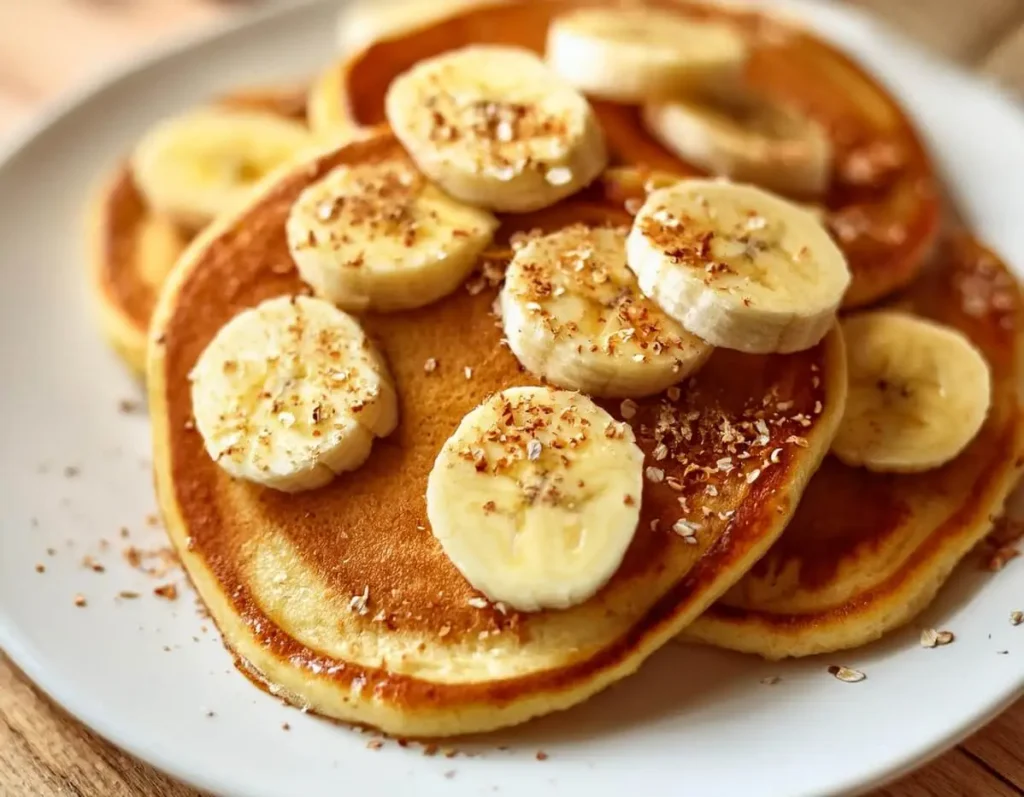
Oats are a powerhouse ingredient for making healthy pancakes. Learn more about the benefits of incorporating oats into your diet, including their role in supporting heart health and digestion.
Recipe: Healthy Pancakes with Oats
- Blend 1 cup of oats into a fine flour.
- Mix in 1 ripe banana, 1 egg, and ½ cup of almond milk.
- Add 1 teaspoon of baking powder and a pinch of cinnamon.
- Cook on a nonstick skillet over medium heat until golden brown on each side.
These oat-based pancakes are a perfect combination of nutrition and flavor. They pair beautifully with fresh fruit or Greek yogurt for added protein.
Oats are a great option for creating pancakes that are both delicious and nutrient-dense. You can learn more about choosing the healthiest type of pancake here.
2.2. Healthy Banana Pancakes Recipe: A Flour-Free Option
Bananas are a versatile and naturally sweet ingredient for healthy pancakes. They are rich in potassium, which supports heart health, and fiber, which aids digestion. Bananas also replace refined sugar in recipes, making them an excellent choice for those looking to cut back on added sugars.
Recipe: Healthy Banana Pancakes (3 Ingredients)
- Mash 2 ripe bananas in a bowl.
- Add 2 eggs and 1 teaspoon of baking powder.
- Whisk until smooth and cook on a preheated skillet.
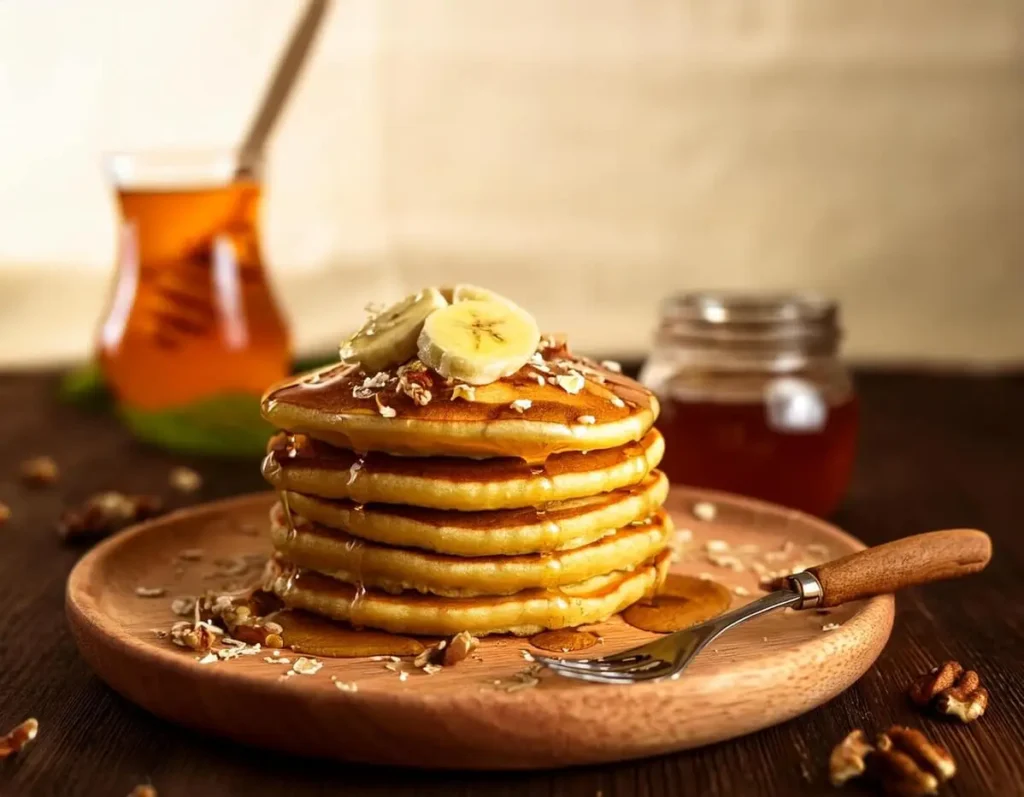
This recipe for Healthy banana pancakes no flour is quick, simple, and requires only pantry staples. Top with fresh berries or a dollop of nut butter for a wholesome breakfast.
2.3. Low-Calorie Options
For those aiming to reduce calorie intake, ingredient substitutions are key. Use almond flour or coconut flour for a lower-calorie base, and incorporate Greek yogurt or unsweetened almond milk to add moisture without extra fat.
Tip: Minimize oil by cooking pancakes on a well-seasoned nonstick pan. These tweaks ensure that your pancakes remain fluffy, delicious, and aligned with your health goals.
3. What is the Healthiest Way to Eat Pancakes for a Balanced Breakfast?
For pancake lovers committed to a healthy lifestyle, the question arises: What is the healthiest way to eat pancakes? The answer lies in balancing portion sizes, using nutrient-dense ingredients, and making mindful choices about preparation and toppings.
If you’re seeking alternatives to traditional recipes, explore healthy substitutes for pancakes to keep your breakfast exciting and nutritious.
Portion Control and Balanced Ingredients
Start with moderation. Even the healthiest pancakes can become calorie-dense if consumed in large quantities. A serving of two to three medium-sized pancakes is generally sufficient for most people. Use whole-grain or alternative flours, natural sweeteners, and healthy fats to keep your pancakes filling yet light. For instance, healthy fluffy pancakes can be made by adding Greek yogurt or egg whites to your batter for extra protein without excess calories.
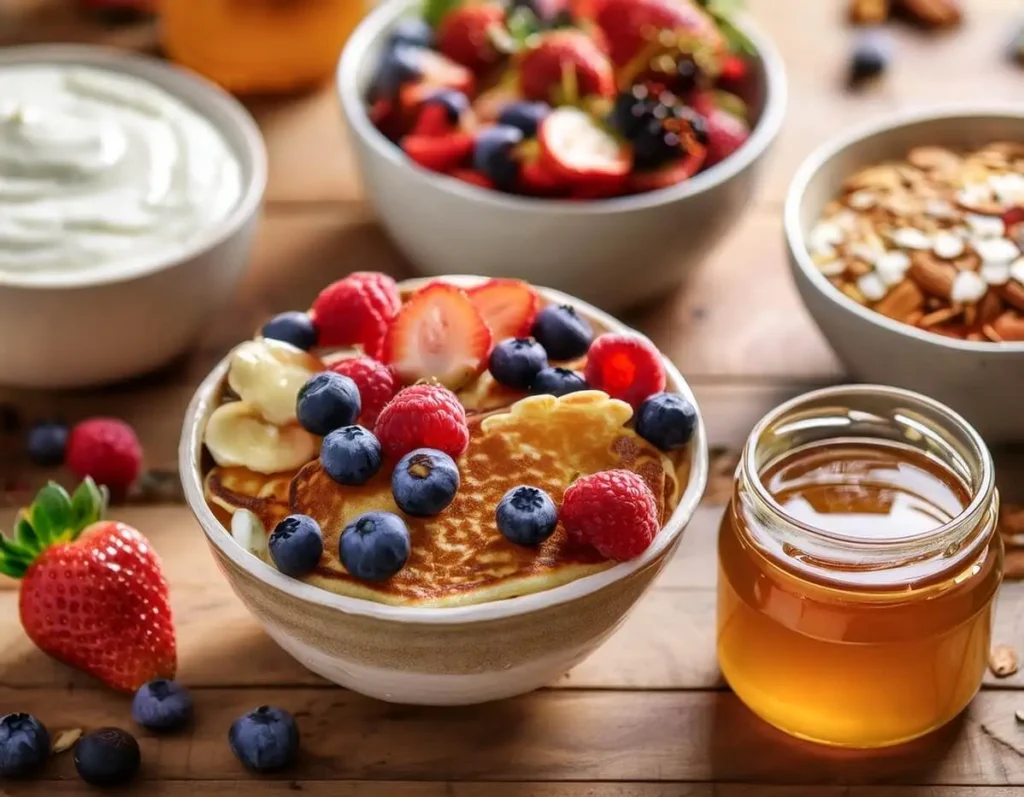
Preparation Tips for Healthier Pancakes
Cooking methods play a key role. A nonstick skillet eliminates the need for excess oil or butter. If you must use oil, opt for healthier options like coconut oil or a light spray of avocado oil. Additionally, low-calorie sweeteners such as honey or a small drizzle of pure maple syrup provide sweetness without spiking your calorie count.
Toppings That Enhance Nutrition
Choosing the right toppings can elevate your pancakes from a sugary indulgence to a balanced meal. Healthy options include:
- Fresh Fruits: Blueberries, strawberries, or banana slices add vitamins and antioxidants.
- Greek Yogurt: A dollop adds creaminess and a boost of protein.
- Nut Butters: Almond or peanut butter provides healthy fats and natural flavor.
- Homemade Fruit Compotes: Cooked apples or berries with a dash of cinnamon can be a sugar-free alternative to syrup.
By implementing these tips, you can create low-calorie pancake recipes that are both satisfying and nourishing. Pancakes don’t have to be a guilty pleasure—they can be a wholesome start to your day.
4. Answering Common Questions About the Healthiest Way to Eat Pancakes
4.1. Do Pancakes Taste Better with Milk Instead of Water?
Milk enhances both the flavor and texture of pancakes, making them richer and more satisfying. The fat and protein content in milk contributes to a creamier batter, resulting in a softer and fluffier texture. Additionally, the natural sugars in milk can subtly enhance the sweetness of the pancakes without the need for added sugar.
For a healthier twist, plant-based milk options like almond milk, oat milk, or coconut milk are excellent substitutes. These alternatives are typically lower in calories and fat compared to whole milk and often add a unique flavor profile to the pancakes. For instance, almond milk adds a nutty undertone, while coconut milk provides a hint of tropical sweetness.
While water can be used as a liquid base in pancake recipes, it tends to yield flatter and less flavorful results. For the best combination of taste and health, choose low-fat dairy milk or an unsweetened plant-based alternative.
4.2. What Can I Put on Pancakes Instead of Syrup?
Syrup is a classic topping but often loaded with added sugars and calories. Healthier options not only enhance the flavor but also add nutritional value to your pancakes:
- Fresh Berries: Blueberries, raspberries, and strawberries are packed with antioxidants and natural sweetness.
- Nut Butter: Spread a thin layer of almond or peanut butter for healthy fats and protein.
- Homemade Fruit Compotes: Cook down fresh or frozen fruits with a splash of water and cinnamon for a sugar-free syrup alternative.
- Greek Yogurt: A dollop adds creaminess and a dose of protein.
- Honey or Maple Syrup (in moderation): If you prefer traditional sweeteners, opt for small amounts of raw honey or pure maple syrup.
These options can elevate your pancakes while keeping your meal healthy and balanced.
4.3. What is the Healthiest Type of Pancake?
If you’re wondering what is the healthiest way to eat pancakes, the answer lies in recipes like healthy banana pancakes and oat pancakes. Some top choices include:
- Healthy Pancakes with Oats: Rich in fiber, protein, and slow-digesting carbs.
- Healthy Banana Pancakes: Naturally sweetened and flour-free, these are perfect for a light, nutritious breakfast.
By using these recipes, you can enjoy pancakes without compromising on health.
4.4. What is a Healthy Way to Eat Pancakes Every Day?
To eat pancakes healthily:
- Use whole-grain or alternative flours like oats or almond flour.
- Keep portions in check (two to three medium pancakes per serving).
- Pair them with nutrient-rich toppings like fresh fruit, Greek yogurt, or nut butter.
- Cook with minimal oil on a nonstick skillet.
By following these practical tips, you can make pancakes a healthy and satisfying part of your diet.
To further customize your pancakes, you might wonder if there is dairy in healthy pancakes or if plant-based options are better for your needs.
5. Recipes to Try for Healthier Pancakes
Making healthier pancakes doesn’t mean sacrificing flavor or texture. Below are three easy-to-follow recipes that highlight wholesome ingredients while keeping your pancakes light, fluffy, and nutritious.
5.1. Healthy Fluffy Pancakes
Fluffiness is a hallmark of delicious pancakes, and achieving it while keeping the recipe healthy is simple. Key ingredients include baking powder for rise, Greek yogurt for moisture and protein, and egg whites for structure.
Recipe: Healthy Fluffy Pancakes
- In a bowl, mix 1 cup of whole wheat flour, 1 teaspoon of baking powder, and a pinch of salt.
- Whisk 2 egg whites until frothy and fold them into the batter.
- Add ½ cup of Greek yogurt, ½ cup of almond milk, and 1 teaspoon of vanilla extract. Stir until just combined.
- Heat a nonstick skillet over medium heat. Pour ¼ cup of batter for each pancake.
- Cook until bubbles form on the surface, then flip and cook until golden brown.
These pancakes are light, fluffy, and perfect for pairing with fresh fruit or a drizzle of honey.
5.2. Banana Pancakes Recipe
Banana pancakes are a naturally sweet, gluten-free option that’s incredibly easy to make. With just three ingredients, this recipe is ideal for a quick and healthy breakfast.
Recipe: Healthy Banana Pancakes (No Flour)
- Mash 2 ripe bananas in a mixing bowl.
- Add 2 eggs and 1 teaspoon of baking powder. Mix until smooth.
- Optional: Add a pinch of cinnamon or a dash of vanilla extract for extra flavor.
- Heat a nonstick skillet over medium heat and pour small amounts of batter for each pancake.
- Cook for 2–3 minutes on each side until golden brown.
This simple recipe is versatile—try adding chopped nuts or blueberries for added texture and nutrients.
5.3. Healthy Pancakes with Oats Recipe
Oats are a fantastic base for creating fiber-rich pancakes that keep you full longer. This recipe is quick, easy, and perfect for meal prep.
Recipe: Healthy Pancakes with Oats
- Blend 1 cup of rolled oats into a fine flour using a blender.
- In a bowl, combine the oat flour with 1 teaspoon of baking powder and a pinch of salt.
- Add 1 ripe banana, 1 egg, and ½ cup of almond milk. Stir until the batter is smooth.
- Cook on a preheated nonstick skillet over medium heat, using ¼ cup of batter per pancake.
- Flip when bubbles appear on the surface and cook until golden brown.
Serve these pancakes with a topping of Greek yogurt, fresh fruit, or a dollop of almond butter for a satisfying meal.
6. Essential Tips for Mastering the Healthiest Pancakes
Making healthy pancakes isn’t just about the ingredients—it’s also about the technique. To master what is the healthiest way to eat pancakes, it’s crucial to consider preparation, storage, and creative add-ins. Here are some essential tips to ensure your pancakes turn out perfect every time.
Cooking Techniques
- Maintain the Right Pan Temperature: A medium heat setting is ideal. Too hot, and your pancakes may burn on the outside while remaining undercooked inside. A good test is to sprinkle a few drops of water on the pan—if they sizzle and evaporate quickly, the pan is ready.
- Flip at the Right Time: Wait for bubbles to form on the surface and for the edges to look slightly set before flipping. Use a thin, wide spatula to ensure an even turn.
- Avoid Over-Mixing the Batter: Stirring the batter too much can make pancakes dense and chewy. Mix just until the ingredients are combined, leaving a few lumps in the batter.
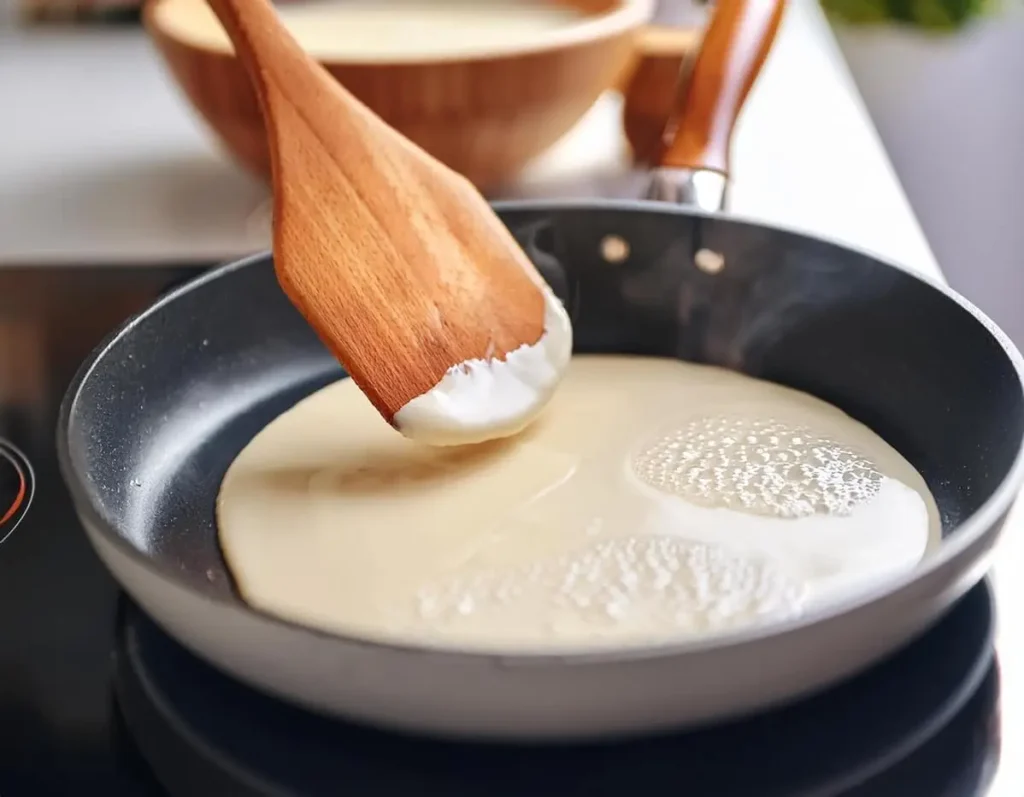
Storage Tips
Healthy pancakes are great for meal prep. To store:
- Freezing: Place cooked pancakes on a baking sheet in a single layer. Freeze for an hour, then transfer to an airtight container or freezer bag.
- Reheating: Warm frozen pancakes in a toaster, microwave, or oven until heated through.
Get Creative with Add-Ins
Elevate the flavor and nutrition of your pancakes by incorporating:
- Chia Seeds: Boosts fiber and omega-3 content.
- Chopped Nuts: Adds crunch and healthy fats.
- Cinnamon or Nutmeg: Provides natural warmth and sweetness.
- Dark Chocolate Chips: A touch of indulgence without overloading on sugar.
By mastering these techniques and experimenting with add-ins, you can enjoy pancakes that are consistently delicious, healthy, and tailored to your taste. Boost your pancake batter with add-ins like chia seeds for extra fiber and omega-3s. Discover creative ways to use chia seeds to enhance your recipes and meals.
Conclusion
So, what is the healthiest way to eat pancakes? It starts with choosing wholesome ingredients like oats, bananas, and whole-grain flours, paired with natural sweeteners and nutrient-rich toppings. From preparation to toppings, understanding what is the healthiest way to eat pancakes can transform this classic dish into a wholesome meal. By focusing on balanced recipes, portion control, and healthier cooking techniques, pancakes can be transformed into a nutritious and satisfying meal.
From healthy fluffy pancakes to banana pancakes with no flour and oat-based pancakes, the possibilities are endless. Toppings like fresh fruits, Greek yogurt, and homemade fruit compotes elevate both the flavor and the nutritional value of your pancakes.
Now it’s your turn to try these recipes and make them your own! Experiment with the ingredient swaps, add-ins, and cooking tips shared in this guide. Don’t forget to share your creations and inspire others to enjoy pancakes in a healthier way. With these changes, pancakes can be a delicious and guilt-free start to your day.
